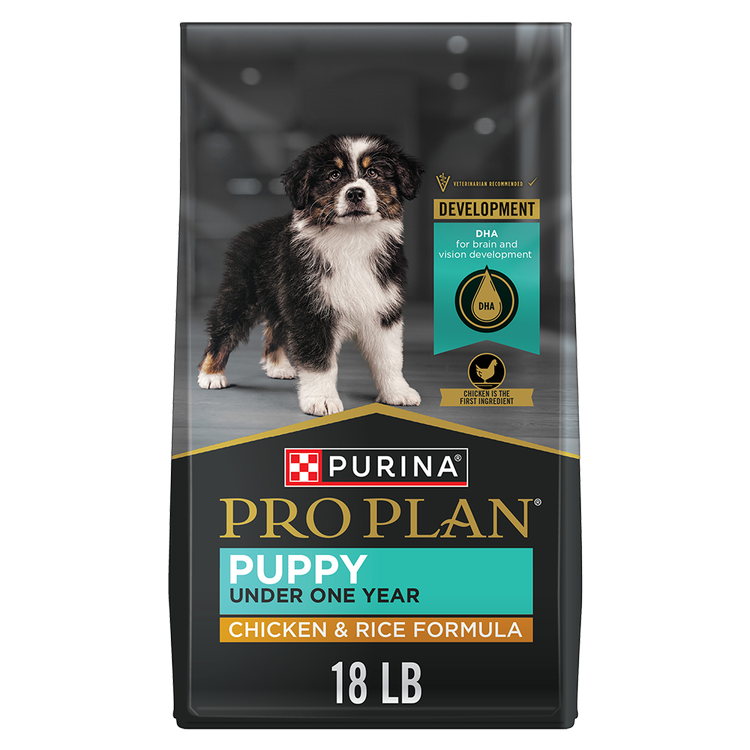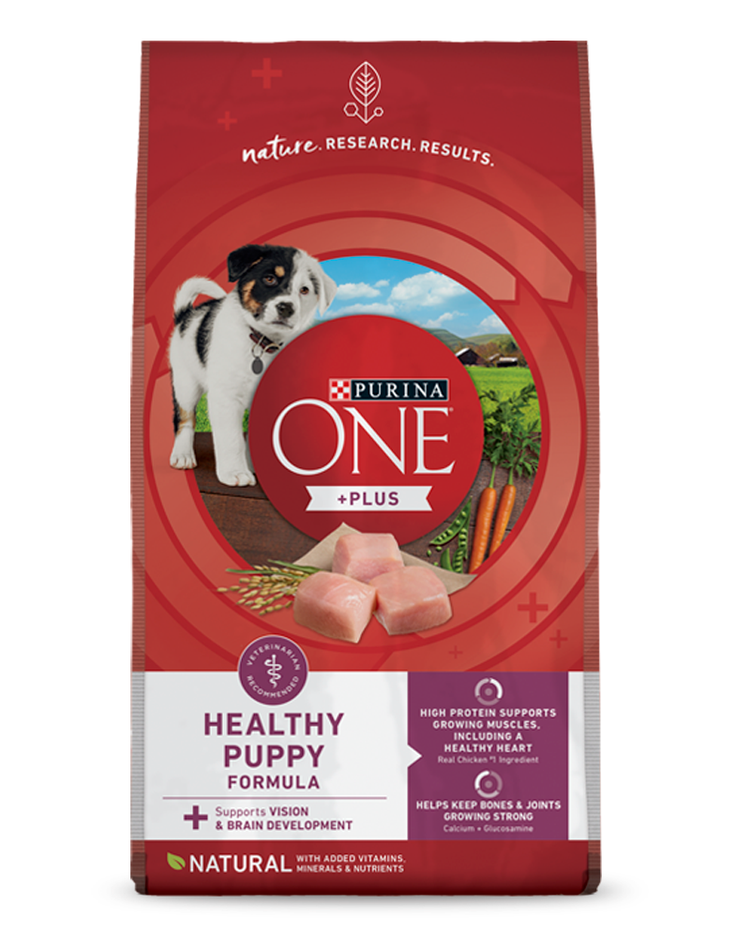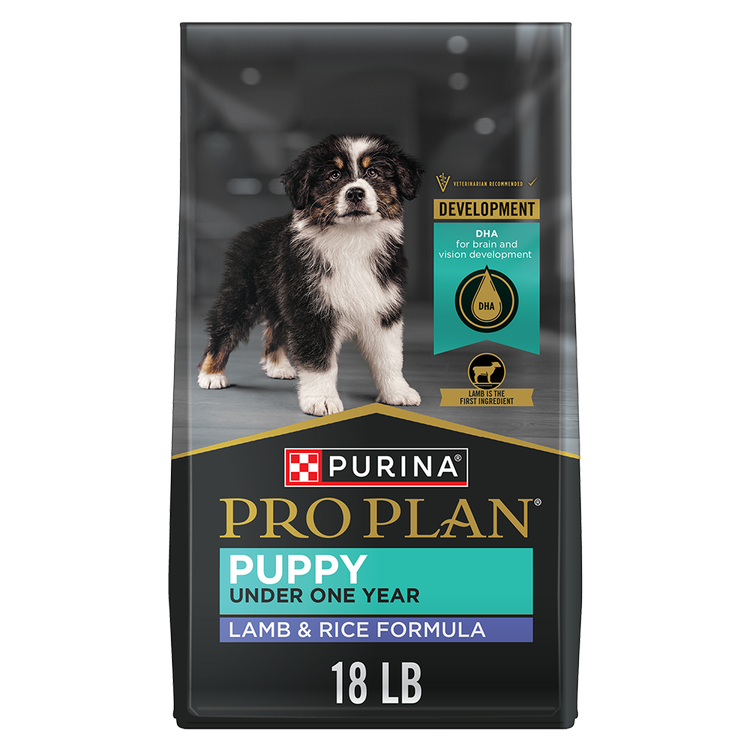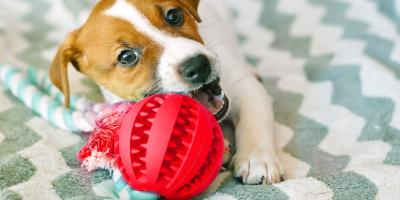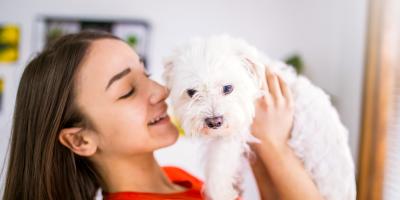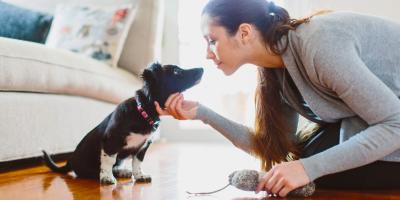Puppy Training: Basic Puppy Training 101


Puppy training is a great family activity that can help you and your entire family bond with your puppy. By starting early, you’ll have a better chance of having a well socialized, confident and properly trained dog.
The most important steps in basic puppy training are to start early, keep calm, be consistent, stay positive and repeat. It might not always go smoothly, but through the process, you will both learn about each other and build a friendship with trust to last throughout your dog’s life.
Here are some puppy training tips and insights to help you achieve puppy training success.
How to Motivate Your Puppy
Like humans, dogs are social animals naturally accustomed to living in “packs.” Your puppy will be a member of your family, but it’s up to everyone to teach them the rules. They’ll come to respect the rules you teach them. All it takes is for you and your family to lead the way.
Your puppy will likely need some time to learn the ropes. What’s important is showing them positive reinforcement and love along the way. It is not beneficial to punish your puppy during training when they do something “wrong.”
The best way to motivate your puppy is through positive reinforcement by giving them plenty of praise and petting them whenever they do the right thing.
If praise isn’t enough to motivate your puppy, that’s okay. Try using puppy treats in moderation or playing fetch as a reward for doing a good job.
Getting Started With Puppy Training
The best time to start training your puppy is the moment they enter your home. Show them right from wrong the first day and continue to teach them the rules as they grow up. Remember that training doesn’t just happen during training sessions but with every interaction you have with your puppy.
If you miss something along the way, that’s okay. You can indeed teach an old dog new tricks. Meanwhile, if you run into any problems or have any questions during training, reach out to your veterinarian.
Be Consistent
To create a strong connection between you and your puppy, be clear and consistent with communication when training them. Teach them positive actions by rewarding them for their successes by giving them treats and plenty of affection.
The important thing is being explicit in teaching them the correct behavior. Otherwise, they’ll get confused. Remember: if you’re not consistent, you can’t expect your puppy to be either. Train the behaviors you want through positive reinforcement.
Treat Reinforcement
Giving your puppy a treat or dry kibble can be an excellent way to reinforce their behavior and encourage them. But don’t give them any free rides. They need to earn that treat, even if all you’re asking is for them to look at you or come toward you to get it. This shouldn’t, however, be their only reward. It’s okay to start with treats, but gradually replace treat rewards with praise. Pretty soon, praise will be all they need, and treats can be just that – a treat.
Correcting Puppy Behavior
Misbehavior from your puppy is expected, but it isn’t out of spite. Instead, puppy misbehavior usually stems from their belief that the way they’re acting is okay. It’s up to you to teach them what appropriate behavior looks like. Puppies live in the present, so don’t bother attempting to give them feedback on anything that occurred in the past. Instead, focus on communicating clearly in the moment by praising them for good behavior and redirecting unwanted behavior. For example, when your puppy jumps up on people, ask for a sit instead and reward them when they do.
Puppy Training Cues
Teaching your puppy cues starts by giving them a command, guiding them towards the correct behavior and, if they follow the command correctly, reinforcing them with plenty of praise and a treat or a toy. Be sure to praise them calmly so as not to overexcite and distract them.
How to Teach Your Puppy to Sit
- Start by getting your puppy’s attention.
- Hold a kibble of food in front of your puppy’s nose.
- Use the cue “sit.” Note: (At first, say “sit,” after your puppy sits until after multiple sit sessions).
- As you say the cue, draw the kibble toward the back of your puppy’s head, which will cause them to look up and their back and rear to go down. As soon as they sit, give them the treat and praise them.
- Timing is essential, so when you start training, give your puppy their reinforcement as soon as their behind touches the floor. Be ready. You are trying to create a connection between the verbal cue “sit” and the reward.
- Once your puppy sits consistently with the hand motion, add the word “sit” as you gesture.
How to Teach Your Puppy to Stay
- Start with your puppy in a neutral position they already know, such as a sit, down or even stand.
- Once you’ve got your puppy sitting, put your hand flat in front of their face and give the cue: “Stay.”
- Take one step back from your puppy while facing them.
- If your puppy gets up, step back toward them.
- If your puppy remains sitting, take a step forward to reinforce the stay.
- Repeat until they stay consistently.
- Next, try taking two steps back. If your puppy follows you, go back to taking one step. Gradually increase the distance over time while using the cue, “stay.”
- “Release” your puppy by using a release word like “free,” or “break,” to let them know that they're done with the behavior.
- Remember to praise (and treat, if needed) but do it calmly. Too much enthusiasm may excite your puppy and make it difficult to continue the training session.
How to Teach Your Puppy "Down"
- Start by getting your puppy in the sitting position.
- Hold a small treat or piece of food in front of your puppy’s nose.
- Move the food down to the ground, just in front of their front paws, then pull the treat slowly out along the ground, as if you’re drawing an “L” with the treat. With food in your hand, your puppy is likely to follow.
- As your puppy lies down, praise them calmly. After several sessions, add the verbal cue “down.”
- Over time, you can pair this cue with other cues, like “stay.”
How to Teach Your Puppy Their Name
- Choose a moment when your dog is not paying attention to you and then say their name in a happy, encouraging tone.
- Once they look at you or acknowledge that you’re speaking to them, reinforce their behavior with praise while giving them a toy or a treat.
- Once your puppy learns to respond consistently to their name, try calling them from a different room or a further distance away.
- Remember to call them by their name whenever you cuddle or play with them.
How to Teach Your Puppy Loose Leash Walking
- If you can, burn off excess energy by playing with your puppy before going for a training walk.
- Begin by putting the leash on your dog and standing still. Try to choose an area free from distractions. When your dog stops pulling on the leash, reinforce them for this behavior.
- Walk a few steps and allow your puppy to walk along with you, then stop and wait for them to stop pulling on the leash or sit and offer them a treat to reward their behavior.
- Continue this strategy until your puppy realizes that staying by your side as you walk or stop with a slack leash is the desired behavior.
- Praise them warmly when they follow the desired behavior.
- Continue walking but try moving at a faster pace with sudden turns to the right or left to keep things interesting. Anytime they pull on the leash, remember to stop until they have calmed down, then give them positive reinforcement.
Things to Note When Teaching Puppy Training Cues
- You can start working on the sit cue with puppies as young as seven weeks of age and work your way up from there.
- Mealtime is an excellent chance to reinforce training. When it’s time for their meal, call them to their feeding area and have them sit before letting them eat.
- Don’t scold or use a threatening tone when your puppy doesn’t get something right because it will scare and confuse them rather than motivate them.
This puppy training guide has introduced some of the basic techniques dog owners use to train their puppies. Remember, every puppy is different, so you may have to shake things up a bit to get your training technique just right for your puppy.
You might even want to seek the assistance of a qualified puppy trainer or behavior professional if your puppy doesn’t make progress on your puppy training timeline. Get more information about dog training and more from our experts on our Pet Expertise page.

Be Rewarded for Your Purina Purchases
Earn and redeem points for Purina products with myPurina app.

